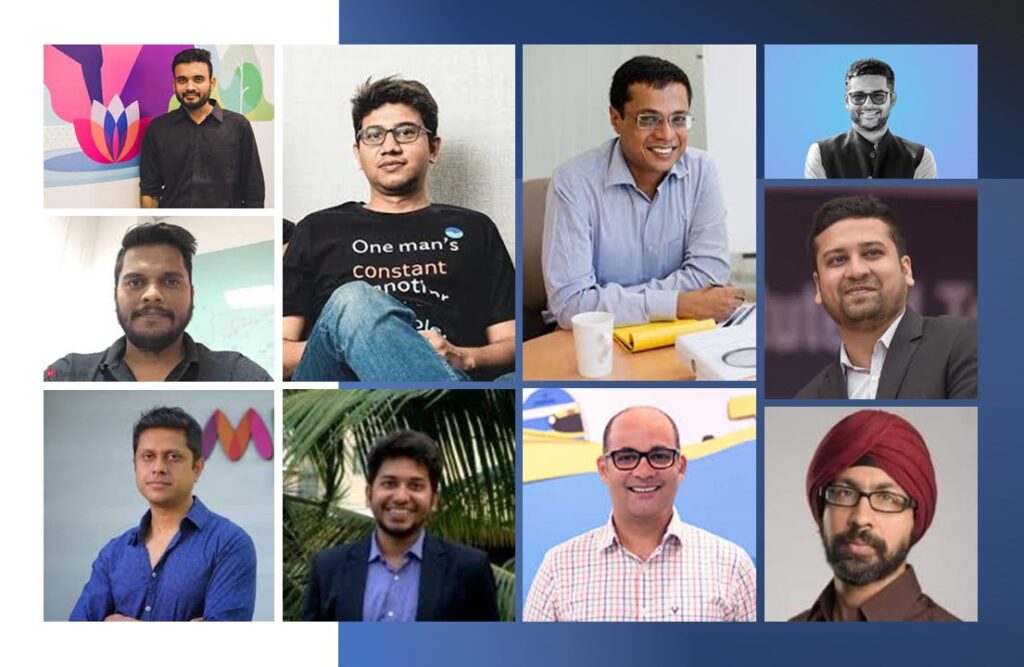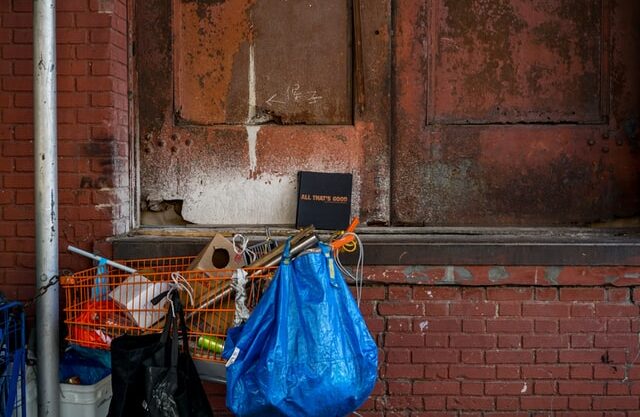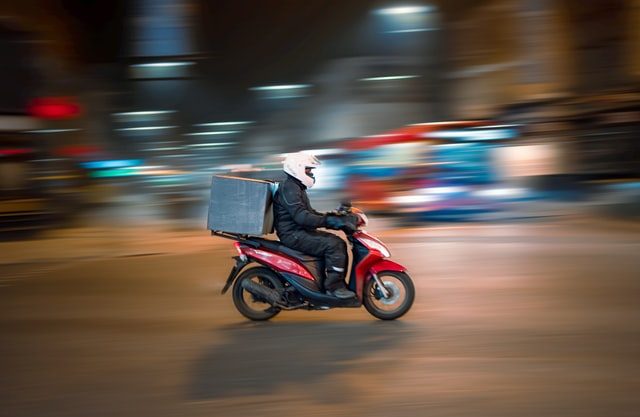Life before Swiggy
How did we enjoy our favorite restaurant food before Swiggy? That’s something I was thinking about as I started penning this article.
Swiggy was founded in 2014. That’s not too long ago. I remember I was living in Mumbai then, and I would often order Chinese from “Shang Dynasty,” a next-door restaurant that had dropped its take away menu outside our house in Dadar!
So I guess the ordering in culture had already started, and the market was ripe for an aggregator to join Zomato in driving the transformation.
Swiggy has done it in style and is perhaps is our hunger savior. Let’s uncover how they went about it.
Tapping the Opportunity
Swiggy was founded in 2014 by a squad of three friends, Nandan Reddy, Rahul Jaimini, and Sriharsha Majety. Unlike Zomato and a few other apps already existing during that time, Swiggy focused on simplicity and transparency.
They created an easy-to-use Swiggy app, an on-demand food ordering and delivery platform where you get a host of nearby restaurants to choose from and can get your food delivered in 30-40 minutes with just a tap. The icing on the cake is that you can track your order and know exactly how long it will take to get delivered.
The elegance of their solution in a market ripe for the service has led Swiggy to a valuation of $5 billion or a whopping 37,000 Cr. That’s almost the same size as the value of the organized biscuit market in India, demonstrating the stunning potential that the brand delivers.
Both Brands, Swiggy & Zomato have been doubling every year and in 2019-20, Swiggy (Bundl Technologies Private Limited) reported a revenue of Rs 2,956 crores, a 129% jump over the previous financial year and a net loss of Rs 3,768. Swiggy operates in over 500 cities and has an active delivery fleet of 200,000 restaurants.

The Business or Revenue Model- How does Swiggy make money?
The business or revenue model of Swiggy are based on a hyperlocal on-demand food delivery business operation. Swiggy works as a bridge between restaurants and customers through an innovative technology platform that works as a single point of contact.
Once customers click on the app, they are presented with a bouquet of nearby restaurants with clear delivery times. Once an order is placed, the order is broadcasted to their fleet of delivery partners saving effort & costs of the restaurants.
The delivery personal are incentivized to deliver the order within 30 minutes, adding to an experience of convenience for the consumer and a steady set of orders for restaurants.
One of the reasons for Swiggys astronomical valuation is their clear sight to profitability which is based on a solid revenue model that has 6 robust revenue streams that the company has nurtured:
1. Delivery Charges: The company charges a nominal charge of Rs 20 to Rs 40 for orders below Rs 250 and raises the same during unusual weather conditions or periods of high order demand.
2. Commissions: Swiggy charges between 15-25% commissions from the restaurants for using their delivery fleet for every order placed on their app.
3. Advertising: Swiggy earns advertising revenue from the restaurants featured on their app Banner promotions & Priority listing. They allow restaurants to place banner ads for a cost & also allow them to pay for a higher listing on the app.
4. Swiggy Access: This is an entirely new concept that Swiggy has pioneered. They offer cloud kitchens on rent to restaurants so that they can offer their menus to consumers in locations where they may not have a physical restaurant. This service alone could account for 25% of Swiggys revenues in the future.
5. Swiggy Super: The program offers unlimited free delivery for all orders above Rs 99 and can help members avoid surge pricing during periods of excessive demand.
6. Swiggy Go: This is another new service that Swiggy launched in 2019 to offer instant pick up & drop service for parcels from different locations across the city. This service has now morphed into Swiggy Genie.
Swiggy has indeed demonstrated excellent business fundamentals by tapping a ripe business opportunity and building a solid business model with robust revenue streams.
However, the next question we would like to uncover is how Swiggy went about building a loyal consumer base & investing in growing this nascent category across India.
Differentiated Marketing Strategy of Swiggy
Swiggy spent Rs 778 crore on advertising and marketing in FY19 as compared to Rs 130 crore in the previous financial year. The power of Swiggys marketing strategy emerges from certain sharp marketing principles:
Target Segment: Swiggy sharply targets the 18-35 demographic, which has easy access to smartphones, is digitally savvy, and looks towards online platforms to satisfy their daily needs. These include students who cannot cook independently, working professionals who order during office hours, and families who prefer to skip cooking on certain days.
Segment Attitudes: The sharpness of their target group understanding is well reflected in the desi pop attitude reflected in their breezy and humorous communication.
Communication Task: Further despite being a late entrant and till recent years a #2 to Zomato, Swiggy has always been clear that their Brand Task is to grow the Home Delivery Category. They have achieved this brand task by focusing on sharp entry barriers that their TG faces and activating them with hard-hitting campaigns.
TG Passion Points: The brilliance of Swiggy’s marketing strategy is even more evident as they have clearly identified Cricket as a clear segment passion point and invested heavily in IPL through snackable films that leverage the cricket mood without interrupting the consumers’ viewing experience.
Digital Marketing: Swiggy is one of the foremost examples of a Digital-first brand and has a clear Digital strategy that we will cover next.
Innovation: Lastly, Swiggy has turned every crisis into an opportunity and even during and before the pandemic, has launched innovative services with efficient execution.
Strategic Communication is a part of Swiggy’s marketing strategy
While Swiggy has been engaging digital content almost since its inception, its real thrust started with their IPL collaborations from 2017 onwards that they have cemented & strengthened over the next few years.
The uniqueness of the Swiggy marketing and communication strategy has been tight 20-second edits with simple characters and a cricket commentary voice-over. The most iconic films and their link to strategy are as follows:
1. Super-Fast Delivery to the Rescue: Here Swiggy made a series of endearing commercials including the one of the father eating his daughter’s ice cream. With the daughter threatening to burst into tears. With a commentator stating “What a delivery”. Extremely sharp message on quick delivery times delivered in a hilarious matter.
2. No Minimum Order: The Gulaab Jamun uncle is perhaps Swiggies most loved commercial. Again delivered in a tight 20-sec edit with a very sharp message that we’ll deliver the smallest order. The ad has also seen several sequels in subsequent IPL seasons.
3. Try something new: And finally the 3rd message in the series that you can experiment with new cuisine. What remains constant are the simple relatable characters, dry humor, the cricket commentator building the story & the fun music towards the end.
Overall this media strategy has deliver gangbuster results for the Brand with a clear link to driving category growth with sharp & efficient media assets driving spectacular growth year after another.
This leads us to their latest Campaign, “Swiggy Karo, Fir Jo Chahe Karo,” which talks about the importance of family time that you will gain if you Swiggy. Again delivered with a series of sharp 20 sec with simple characters and a well-delivered message.
Swiggy’s witty Digital Marketing Strategy
While TV, especially through IPL collaborations, has been growing in prominence for Swiggy, they have perhaps been one of the first digitally driven brands in the Indian landscape. Let’s now understand how the Brand leverages digital effectively.
1. Search Engine Optimization: Swiggy has 50 Million+ App downloads and sees and monthly organic traffic of 4.9 Million users. While most of the traffic to Swiggy’s website is Branded traffic led by “Swiggy” as a search word, the website also sees 37% un-branded traffic on the back of other keywords that the Brand owns.
As per Semrush, The key driver behind Swiggy’s organic traffic is its big webpage with 285k pages and hence has a ranking for 633k keywords on google. Swiggy also has ~30% keywords in the top 10 positions in google, ensuring that traffic moves to Swiggy seamlessly.

2. Search Engine Marketing: Along with the organic traffic that the Swiggy website delivers to the Brand, Swiggy also invests in paid search through the 136 Paid keywords that it owns at a spend of INR 54 Lac per month.
3. Social Media Marketing: Swiggy has 154k subscribers on Youtube, 0.9 Million Likes on Facebook & 239K followers on Instagram as of June’21. Along with images of delicious dishes to entice its users to order more, Swiggy social feed is full of humor and witty campaigns. Swiggy has built an emotional but filled connection with its target audience which is millenials.
Swiggy also takes full advantage of topical marketing strategy with its striking and creative graphics on latest trend. In Topical Marketing, teams take up a trending topic and develop an ad campaign laced with their brand reference. The objective is to piggyback on a subject that has already gained momentum in media channels. How topical marketing strategy works, read here.
4. Email Marketing: Email has always played a major role in growing Swiggy’s business and reaching out to a significant part of the consumer base. Swiggy’s Email campaign is predominantly aimed to build a sense of curiosity amongst its users.
Swiggy created a new record in Email Marketing by achieving a Click Through Rate (CTR) of 7%, Open Rate of 25% on a user base of millions. With the average industry standard being 1-1.5%, Swiggy’s campaign has set a new benchmark in Email Marketing.
Swiggy continuously adding Innovations to its traditional business model
The last segment of this article will examine how Swiggy has been using innovation as a tool for increasing its relevance and revenue.
1. Instamart: As India entered a lockdown last year, both Swiggy & Zomato experimented with grocery delivery through Swiggy Stores & Zomato Market. However both brands quickly realized that the commissions in grocery delivery aren’t as attractive as cooked food and hence are not a viable solution to leveraging their efficient but expensive delivery fleet.
While Zomato Market was rolled up in 2 months, Swiggy has replaced the online grocery marketplace with ‘Instamart’, an instant delivery service for groceries and other household items, fulfilled through a network of dark stores.
The key differentiator versus Big Basket & Grofers would be the delivery time of 30-45 minutes, day and night serviceability (7 am till 12 midnight) a wide assortment across categories such as instant meals, snacks, ice creams, beverages, fruits, and vegetables.
Instamart addresses the unmet grocery needs of the time-pressed, convenience-seeking urban consumer. However, it remains to be seen if this experiment succeeds and is currently being piloted in Gurugram and Bengaluru.
2. Swiggy Genie: Is another service being experimented by Swiggy that makes effective use of their delivery personal and over the past year has been extended to 65 cities.
While it is a direct competition to Dunzo, the key difference is that Swiggy has been prioritizing covid emergencies. The bulk of the reasons for using the services have been medical necessities, including oximeters and thermometers, grocery needs, medicines, and home-cooked meals.
This service is very relevant in the times of the pandemic, however it remains to be seen if the brand will continue to focus on the same post the second wave.
3. Health Hub: This is one of the most recent innovations from the dynamic brand; it’s a healthy food discovery section on the app. The food delivery platform has collaborated with nutritionists and top restaurants to curate special health menus and dishes.
Consumers can take their pick from health-focused dishes, including gluten-free, high-protein, low-carb, organic, vegan, and keto meals. It also boasts to be the first to offer consumers detailed information on macronutrients such as protein, carbohydrates, and fats for dishes.
In Conclusion
Swiggy has indeed become an integral part of our lives and something that we look forward to. The pandemic tested the agility of the founders; however, the brilliance that the organization has demonstrated in their strategic thinking, the creative finesse of their communications & the innovative zeal of launching new services tells us that the story of Swiggy is barely on its first chapter. There are many new delights that the brand will share with its users in the times to come.
So till then, Swiggy karo, fir jo chahe karo!
-AMAZONPOLLY-ONLYWORDS-START-
Also, check out our most loved stories below

Why did Michelin, a tire company, decide to rate restaurants?
Is ‘Michelin Star’ by the same Michelin that sells tires, yes, it is! But Why? How a tire company evaluations became most coveted in the culinary industry?

Bajaj Auto: The Story of an Indian Born Global Brand
Bajaj Auto has evolved tremendously over time from its traditional scooter Chetak to having the trendiest bike Pulsar. It has managed to stay relevant.

Jio’s Offensive Marketing Warfare: From Challenger to Leader
In just 4 years Reliance Jio has become the Indian telecom market leader due to its marketing warfare strategies. What is this strategy and how Jio used it?

Johnnie Walker – The legend that keeps walking!
Johnnie Walker is a 200 years old brand but it is still going strong with its marketing strategies and bold attitude to challenge the conventional norms.

Flipsters: Creating the Butterfly effect in Indian Startup Ecosystem
How is it that ex-Flipkart employees or Flipsters as they call themselves have achieved such massive success in the Indian Startup Ecosystem?

Nike doesn’t sell shoes. It sells an idea!!
Nike has built one of the most powerful brands in the world through its benefit based marketing strategy. What is this strategy and how Nike has used it?

Domino’s is not a pizza delivery company. What is it then?
How one step towards digital transformation completely changed the brand perception of Domino’s from a pizza delivery company to a technology company?

Why Indians love Old Monk? What is the revival plan of the dying brand?
Indians especially armed forces and college students for generations have loved Old Monk. What makes this rum so special? It’s classy, dark yet affordable.

IKEA- The new master of Glocalization in India?
IKEA is a global giant. But for India, the brand modified its business strategies. The adaptation strategy by a global brand is called Glocalization
-AMAZONPOLLY-ONLYWORDS-END-
















